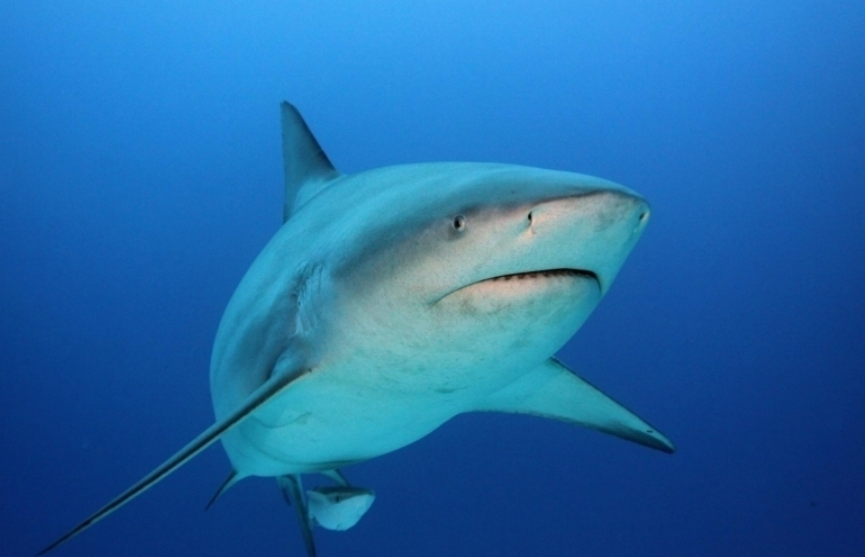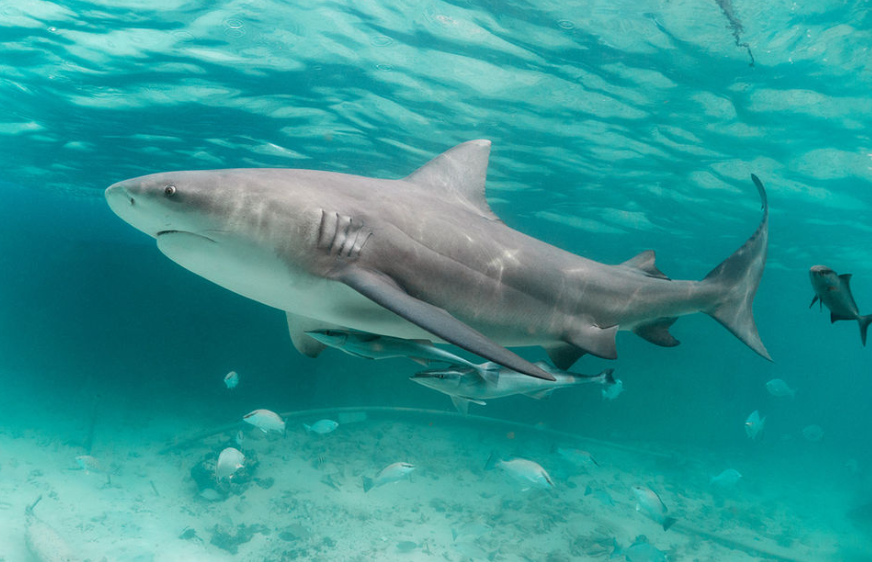
Intriguing Facts about bull shark fish
Bull sharks, scientifically known as Carcharhinus leucas, are a distinct species of shark that inhabits both freshwater and saltwater environments. Because of their remarkable ability to tolerate and adapt to varying salinities, bull sharks, unlike most other shark species, can dwell in rivers, estuaries, and even lakes. Because of their versatility, they have earned the title of being among the most diverse and adaptable shark species in the world.
Bull sharks have unique characteristics
With their size, unusual reproductive technique, hostility, and adaptability, bull sharks are really amazing animals. They differ from other shark species in that they can live in both freshwater and saltwater habitats. Even if they could be seen as harmful to people, it’s crucial to recognise and value their contribution to preserving environmental equilibrium. The long-term health and variety of the aquatic environments on our planet can be guaranteed by safeguarding and preserving bull shark populations.
Amazing and unique facts about bull sharks
One of bull sharks migrating upriver into freshwater habitats is among the most amazing facts about them. They have been seen swimming hundreds of kilometres upstream, jumping over obstacles like waterfalls, and crossing rivers. Their unique behaviour sets them apart from other shark species and allows them access to new food sources and regions for mating that were previously inaccessible.
Bull sharks and interactivity with humans
Bull sharks are among the shark species most dangerous to humans because of their reputation for violence. With their powerful jaws, sharp fangs, and stocky build, they are formidable predators. They eat a wide range of species, including fish, dolphins, turtles, and even other sharks. Because they can withstand freshwater, bull sharks have been known to enter areas where humans are present, increasing the possibility of encounters and accidents. When swimming or engaging in other water activities in areas where bull sharks are known to be prevalent, people should use caution.

Fascinating facts about bull sharks
Carcharhinus leucas, the scientific name for bull sharks, is a unique type of shark that lives in freshwater and coastal areas worldwide. Here are a few fascinating details about these unusual animals:
Adaptability of bull sharks to various environments
The fact that bull sharks can live and prosper in both freshwater and saltwater settings is one of their most amazing traits. Bull sharks, which inhabit rivers, lakes, and even swamps, are able to withstand low salinity levels, in contrast to the majority of other shark species. Because of their versatility, they may travel hundreds of kilometres upstream in quest of food or good places to mate.
Social behavior of bull sharks
Because of their aggressive nature, bull sharks are among the shark species that pose the greatest threat to people. They are known to be aggressive and bear much of the blame for shark attacks that occur in shallow coastal waters. Because of their hostile disposition and capacity to swim in both fresh and saltwater, they pose a risk to people and shark populations in regions where they cohabit.
Description of Bull sharks appearance
Bull sharks are well-known for their size, power, and aggressiveness. With mature females generally reaching lengths of 7 to 8 feet (2.1 to 2.4 metres) and males somewhat smaller at roughly 6 to 7 feet (1.8 to 2.1 metres), they are regarded as medium-sized sharks. But others have been known to grow considerably bigger; bull sharks have been documented to weigh more than 500 pounds (227 kilogrammes) and reach lengths of up to 11 feet (3.4 metres).
Explanation of Bull Shark diet preferences
Bull sharks eat a variety of species; thus, their teeth are uniquely suited for this diet. Their front teeth are triangular and sharp for tearing and grabbing, while their rear teeth are wider and more serrated for grinding and crushing. Their adaptable oral structure enables them to consume a wide range of freshwater and marine organisms, including fish, birds, turtles, and even other sharks.
Reproduction and life cycle of Bull sharks
Bull sharks use a special kind of reproduction called viviparity. By this, it is meant that the embryos grow within the mother’s body and get nourishment from the placenta until birth. Bull sharks usually have a litter of four to ten pups during their ten- to eleven-month gestation period. Soon after birth, the baby sharks are completely grown and ready to swim and hunt.
Habitat and distribution of Bull sharks
Bull sharks are distributed around the globe and are particularly common in warm coastal waters and freshwater environments. They are often found in areas like the Caribbean Sea, the Gulf of Mexico, the western Atlantic Ocean, and the South American rivers. Additionally, reports of them have been found in the waterways of Africa, Asia, Australia, and even as far north as the Great Lakes of the United States.

Encouragement for further exploration and appreciation of Bull sharks
In order to keep freshwater and marine ecosystems in balance, bull sharks are essential. As apex predators, they aid in controlling and preventing overpopulation in their prey species populations. Because they are sensitive to changes in water quality and habitat degradation, their existence also serves as an indicator of the ecosystem’s general health. For these ecosystems to be healthy and sustainable overall, bull shark populations must be protected.


